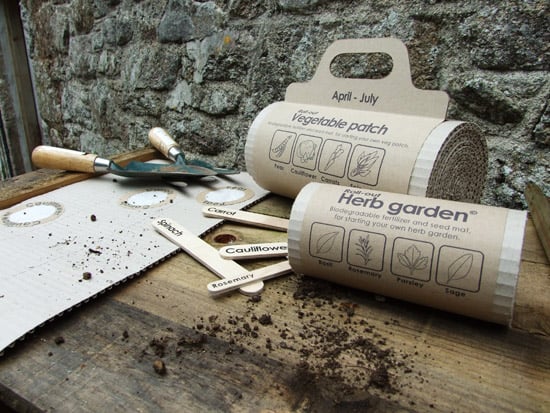The One Cut Chair is water jet cut from a single sheet of plywood. A single continuous cut is made to produce the features that will form the seating surface and lumbar support when folded out. Thus the chair can be manufactured quickly and easily, eliminating the need for labour intensive and time consuming methods associated with traditional furniture construction. The design aims to make the most economical use of the material while minimising the energy required for manufacture. By small adjustments to the process the chair can be subtly altered to offer a variety of appearances and seating positions.
Friday, September 18, 2009
Wednesday, September 16, 2009
Scott Jarvie: the atlas chair
scott jarvie: the atlas chair 
The atlas chair on display at the gallery of modern art, Glasgow
scott jarvie will be exhibiting his atlas chair at this year's 100% design London.
The design is derived by projecting flat angled planes through a volume and using the intersecting elements to generate the profiles that create the sections of the chair. this allows complex surface geometry to be rationalized to planar surfaces,
providing sculptural possibilities while utilizing materials efficiently, developing a system that facilitates construction. 
development model (scale 1:4)
dual spine prototype in 4mm birch ply - CNC cut 
development model (scale 1:4)
dual spine prototype in 4mm birch ply - CNC cut 
original concept model (scale 1:10)
single spine prototype in modeling card - hand cut
http://www.designboom.com/weblog/cat/8/view/7583/scott-jarvie-the-atlas-chair.html
Louis Vuitton book! Amazing!!
Louis Vuitton has always been associated with art, architecture, design and photography. This large format book explores 80 collaborations with the likes of Takashi Murakami and Stephen Sprouse.
-Exclusive edition designed by Takashi Murakami with special cover, jacket and plexiglass slipcase silkscreened in Damier pattern only available online or in Louis Vuitton stores
-Written by international critics in design, fashion, art, architecture and photography
-404 pages including 3 different booklets
-400 full colour photographs and illustrations
-English version published by Rizzoli USA
-French version published by Editions de la Martinière
-Italian version published by Rizzoli Italia
Anodised table by Max Lamb for Deadgood
September 15th, 2009

London designer Max Lamb has designed an anodised aluminium table for British design brand Deadgood.
Three sheets of water jet-cut aluminium are dipped by hand, then slotted together and held in place by countersunk bolts.
Due to be launched at 100% Design in London next week, the tables will be produced in two sizes and four colours.

They will be sold flat-packed for home assembly.
Here’s some more information from Deadgood:
The Anodised Table’s utilise a simple water-jet cutting process to create three sheets of aluminium plate that simply slot together and are assembled with four countersunk socket bolts. Max has aimed to exploit the aluminium for its inherent visual and functional characteristics which has resulted in a simple product whose value lies in the honesty of the finishing process.
Each component is individually dipped by hand, resulting in a unique range of tables that celebrate the natural inherent inconsistencies of variegated anodising. The nature of this process means that each product is slightly different, with varying streaks, marks, or patches of tonal difference incorporated in a blend of colour that runs across the surfaces of the product. This in turn acts as both a visual reference and a valuable insight into the finishing process. The products will be available in two sizes and four refined colours and are supplied disassembled for home construction.
http://www.dezeen.com/2009/09/15/anodised-table-by-max-lamb-for-deadgood/#more-40257
.ORI sto by Jakub Piotr Kalinowski
September 15th, 2009

Polish designer Jakub Piotr Kalinowski has created a stool inspired by origami.

Called .ORI sto, the stool is made of folded metal and can be stacked.Here’s some more information from the designer:
.ORI sto. It is a simple stool inspired by origami. As a result of that arose a product of a light and simple form.
Use of a bending and cutting method allowed to satisfy main design assumption: simplicity and lost manufacturing costs, by dint of that the mass production is possible.
http://www.dezeen.com/2009/09/15/ori-sto-by-jakub-piotr-kalinowski/
Thursday, September 10, 2009
coolest chair ever made

British designer Charlie Davidson has designed a metal chair and named “it Is This the Coolest Chair Ever Made?”

The chair is made of gas-welded powder-coated punched steel and based on an earlier prototype for plastic seating.
It will be launched at 100% Design in London this month.
Is this the coolest chair ever made?
Charlie Davidson is to exhibit at 100%Design this year with a new design he considers to be his finest yet, entitled Is this the coolest chair ever made?
Made from 2mm punched steel sheet, gas welded and powder coated the design is based on an prototype for a plastic outdoor chair made earlier in the year. This limited edition piece takes over a week to fabricate and finish. The designer says, “it takes many hours to get all the holes to line up on the hidden joins” and adds “this chair looks so simple in its form but beneath its almost invisible skin lies months of prototyping that makes a perfectly balanced form. This will become a design classic of the future”.
taken from
http://www.dezeen.com/2009/09/09/is-this-the-coolest-chair-ever-made-by-charlie-davidson/#more-39417
dippin’
“Our Daily Bread” explores the more social aspect of this very familiar foodstuff. Over the course of a week, the designers were transformed into bakers – but bakers with a particular interest in the contexts, situations and behaviours related to bread.
London designers Héctor Serrano Studio have sent us images of objects created in a workshop about bread, which they directed for industrial design graduates at the University Cardenal Herrera in Valencia, Spain.
Our Daily Bread by Héctor Serrano Studio
September 10th, 2009

Top image: Huevón by Reyes Mora. The perfect bread for accompanying a boiled egg. The bread itself has been designed in the shape of an egg-cup, and at the same time you can break pieces off to dip in the egg yolk

The workshop aimed to generate designs based on social observations.
Above: Ñam! by Alberto Silla Morales. This project stems from the past: like many other children, whenever I was sent to buy the bread I always used to break the end off to eat, as it was first thing in the morning and I hadn’t had breakfast yet. When I got home my mother always told me off because I’d made a mess of the baguette by ripping off the end. With this baguette, based on a completely standard one, children can pull off the knob end just like before, but this time without destroying the baguette.

Above: Panchupao by Inma Fenech. A teething ring set and a baby’s dummy. Bread is a staple foodstuff and plays an important role in the traditional European diet. It provides a large amount of carbohydrates, proteins and fibre which are ideal for optimum nutrition. This concept offers babies something healthy to eat while playing and something to bite on when their new teeth are emerging.
Saturday, September 5, 2009
English designer chris chapman wanted to make planting vegetables and herbs at home less work with his
roll-out vegetable mats. the design aims to make home food production as simple as possible and easy to
maintain for busy individuals and families. the design features a mat pre-treated with fertilizer on its
underside and a series of seed pouches which slowly biodegrade over time. this arrangements allows the
plants to develop before coming in contact with nutrients, increasing the chances of germination. the mat
is made from corrugated cardboard and come sin a variety of options each suited for different planting
seasons. small signs designate which plant is where, making harvesting a breeze.


Saturday, May 16, 2009
3.16 billion cycles









A 60 rpm (revolutions per minute) motor drives the entire mechanism. It rotates once every second. The following pulley rotates once every 5 seconds (1:5 ratio). The next rotates once every 60 seconds or 1 minute. Then 5 minutes, 1 hour, 1 day, 1 month, 1 year, and 1 decade. The decade wheel carries the load of the large arc. The large arc rotates once every century. The final ratio between the 60 rpm motor and the large arc is approximately 1:31.6 billion.
Each wheel is marked with a black nut to highlight a position that could be tracked over time. Along the arc, 100 lines mark the divisions of each passing year. When the clock finally reaches the end of a 100 year cycle, the arc falls off its track onto the floor.




3.16 Billion Cycles from che-wei wang on Vimeo.
taken from today and tomorrow.








